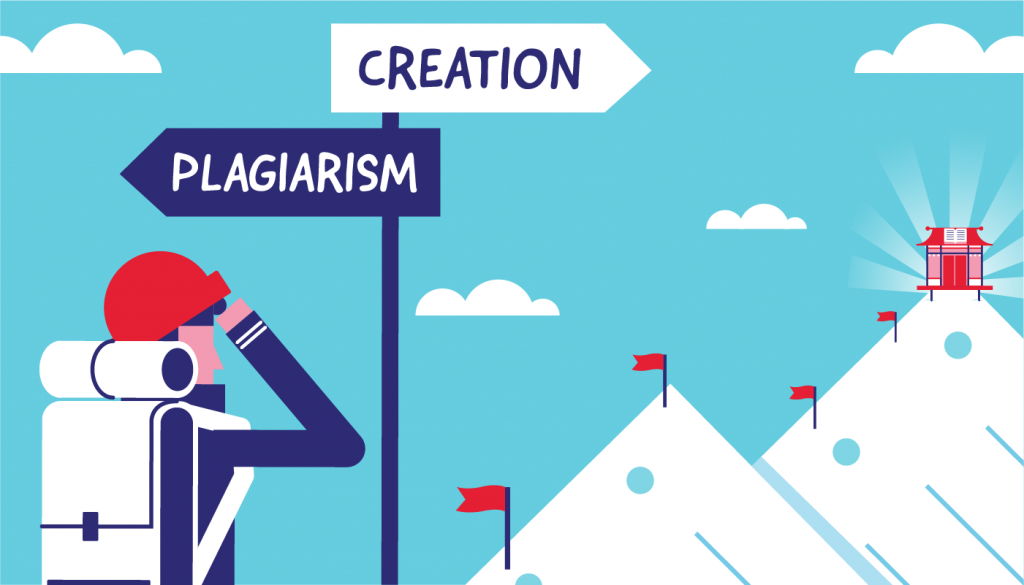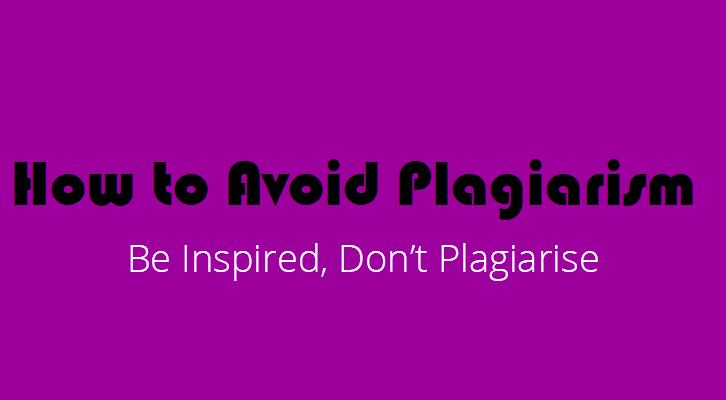In the web content creation industry, the content is either created or re-created. What is the difference between content creation and re-creation?
See, there are over a billion blogs on the web. It means there is one blog for every 7 people on earth.
That’s way too much content. There is a growing and dire need for new content on the web. When you are able to generate this new content, it is called content creation. On the other hand, a lot of content creators use the technique of paraphrasing. What they essentially do there is that they read content that is already out there on the web. They write it in their own words. They are essentially providing the same information in different words. In simple words, paraphrasing is re-creation of the existed content.
You must be thinking, if that’s recreation then what’s plagiarism?

However, some people go out of the way to go ahead and simply copy content from other websites. That is plagiarism. Defined broadly, plagiarism is stealing. Except there is no physical property involved. We are talking about intellectual property here. Plagiarism exists beyond the web content.
Plagiarism is not limited to web content only!
It means plagiarism exists in academia and other creative arenas as well. An artist can be victim of plagiarism. A music producer can be victim of plagiarism. Anything that is creative and contains ideas have property rights. The creator of that content owns that creative property. When someone copies those ideas without taking the creator’s permission or without giving proper credits, it is known as plagiarism.
Difference of plagiarism in web content and other arenas
In web content creation industry in particular, plagiarism is when a website copies content from another website and publishes it as its own. Well thanks to many online plagiarism tools that can help you in finding copied content and can save you and your website from the plagiarism. One of the best plagiarism tool online is prepostseo plagiarism checker.
The next big question is, why people use plagiarize content?

Since everything on the web comes down to content quality, a lot of people assume that copying content from websites that share quality content will get them the same ranking. But what they are essentially forgetting is that they are plagiarizing. It is not only unethical to plagiarize but also it can lead to a court case. When you plagiarize, search engines are quick to detect it. And when that happens, search engines are also quick to penalize. It is a myth to assume that copying content from websites
will great quality will get you quality rankings.
Does plagiarized content decrease ranking on search engine?

If you don’t know already, search engine today has more than 200 factors on the basis of which it is ranked. More or less, everything essentially comes down to the quality of your content. It means the more value your content providers and the more problems it solves, the higher it will rank on search engines. Really, think about it.
People will tell you that you need to create back links if you want to rank better on search engines.
But a piece of content that is providing value gets backlinks automatically. Likewise, grammar and structure is important for search engine optimization. What better way to rank on search engines through language than to focus on content quality? Keyword density is another ranking factor. A blog post that is focuses on quality is bound to have an optimized keyword density.
How to avoid plagiarism in 2019?

Like mentioned above, search engines are quick to detect plagiarism. And when that happens, your search engine rankings come escalating down. You don’t want that. You want to avoid plagiarism at any cost in 2019. Here is how to do that.
Learn that plagiarism is not always intentional
Plagiarism can be both intentional and unintentional. If a website is copying content from another website to deliberately increase its rankings, that is intentional plagiarism. However, in some cases, what happens is that you write a blog post. When you write this blog post, it shows plagiarism for some reason. It is because there is a lot of content out there on the web. There is so much content on the web today that even a new piece of blog post that you create right now has a chance of sharing the same information in very similar words on another blog post on the web. So one of the first lessons in plagiarism for 2019 is to understand that plagiarism is not always intentional.
Learn the difference between plagiarizing and taking inspiration
A lot of times you read a blog post and you think that you should write a blog post similar to it for your own blog. That is great! You are taking inspiration from a blog. However, taking inspiration does not in any case mean that you go ahead and copy content from it. You can choose to write a similar blog post but that means that you will only be taking some ideas from the post. According to some people, if two pieces of content share more than 20 percent of the same information, it should count as plagiarism. However, that should not always be the case.
Use a plagiarism checker tool and difference checker tool

If you want to avoid any and all sorts of plagiarism in 2019, these two tools should be your best buddies. Using a plagiarism checker tool, you can check for plagiarism. If you add the content that you created and then hit enter, you should be able to see if any content on the web has the same information as yours. This is the power of a plagiarism checker tool. Most plagiarism checker tools are available for free on the web and some other advanced tool require you to pay.
A difference checker tool uses two text documents for text comparison. It is going to be helpful when you use a blog post to take inspiration. Simply put, once you are done creating your own blog post, use the difference checker tool for text compare to upload both your blog post and the blog post you used as your guide. Hit enter. The tool should be able to tell how similar these two text documents are. If these two documents share more than 20% of the same information, you might need to re-consider some information in the blog post that you just created.

